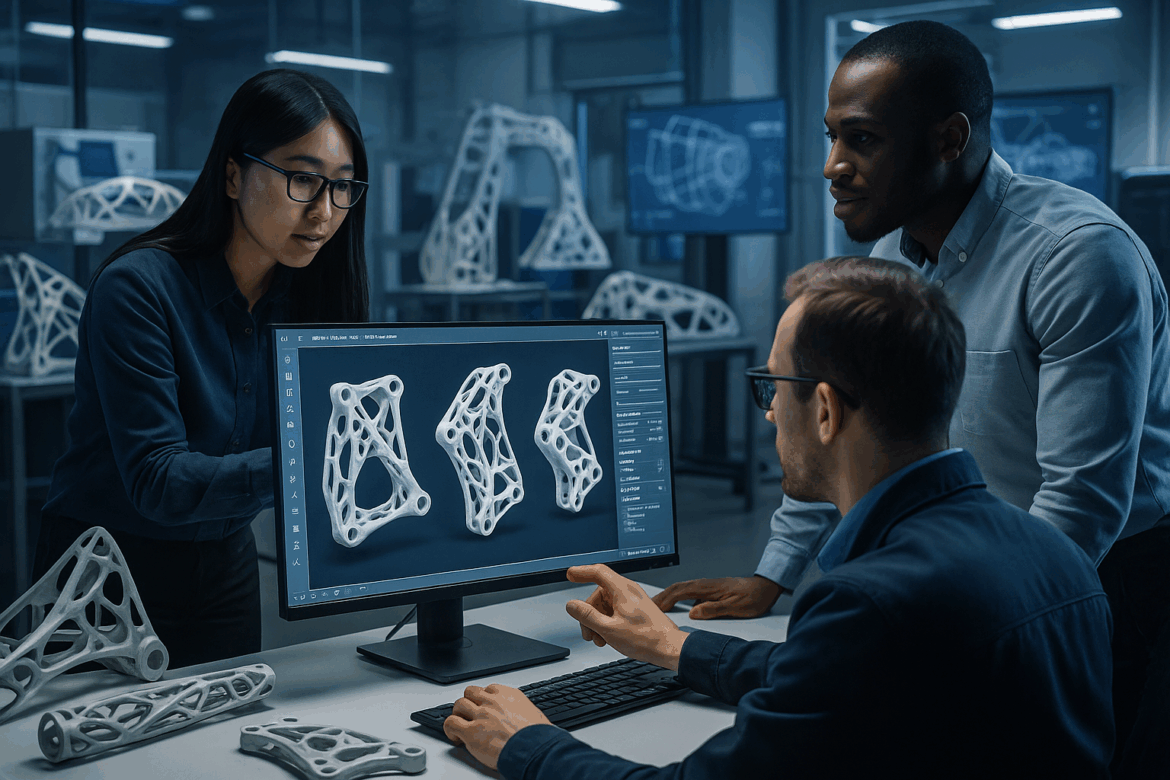Mechanical engineering has always mixed creativity, logic, and experience. These days, AI helps engineers find new ways to innovate. One big step forward is generative design, a technology that’s changing mechanical engineering.
What Is Generative Design?
AI-Assisted Design
Generative design is a method where engineers feed specific goals and limits—like weight caps material options, and size needs—into special software. The software then uses AI algorithms to create many design choices that fit these rules. This approach lets engineers explore a wide range of design ideas that might not be clear right away using old methods.
Why Is Generative Design Important?
Not Just Faster Design
Old-school design methods often take a long time and might not let you look at many different options. Generative design speeds things up by making lots of workable designs letting engineers:
- Cut down on wasted materials
- Make products work better
- Finish projects faster
When computers handle the first part of designing, engineers can spend more time fine-tuning and checking out the best ideas.
How Does Generative Design Work?
Mixing Rules with AI and Cloud Computing
The whole thing starts when engineers set up the design rules and limits. Then, the generative design program uses AI and cloud computing to try out and check tons of different designs. This back-and-forth process finds the best solutions that balance how well something works how much it costs, and how easy it is to make.
Real-World Applications in Mechanical Engineering
From Automotive to Aerospace
Generative design has an impact on many industries:
- Automotive: It creates lighter parts to boost fuel efficiency.
- Aerospace: It designs components that cut aircraft weight while keeping strength.
- Industrial Machinery: It optimizes structures to last longer using less material.
These examples show how versatile and effective generative design is in tackling tough engineering problems.
Benefits of Generative Design
Smart Engineering Without Guessing
- Better Performance: Creates the best design possible within given limits.
- Saves Money: Cuts down on material use and production expenses.
- Sparks New Ideas: Finds unique design answers that old methods might miss.
Generative design also helps the environment by using resources.
Things to Think About
It Takes Time to Learn
Generative design has many good points, but it also has some tricky parts:
- Pricey Software: You need to buy special programs and train people to use them.
- Making Things: Some designs might need new ways to make them, like 3D printing.
- Checking: Engineers must test AI-made designs to make sure they work well.
Tackling these issues is crucial to put this into action.
The Future of Mechanical Engineering
Engineers + AI = Better Products
Generative design doesn’t aim to replace engineers but to boost their abilities. When engineers use AI, they can explore more design options, which leads to more groundbreaking and effective products. As tech keeps changing generative design will become a common tool for mechanical engineers.
